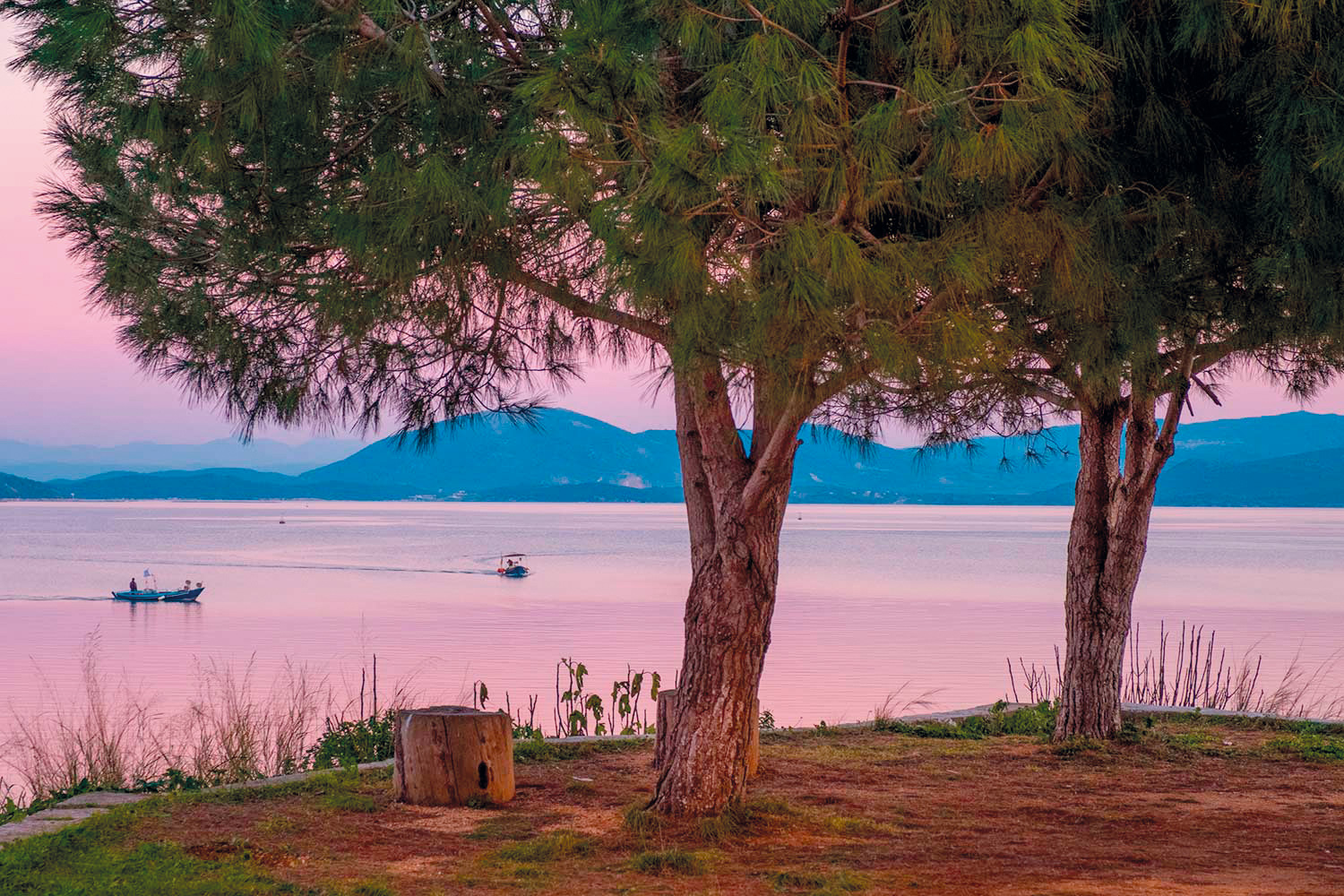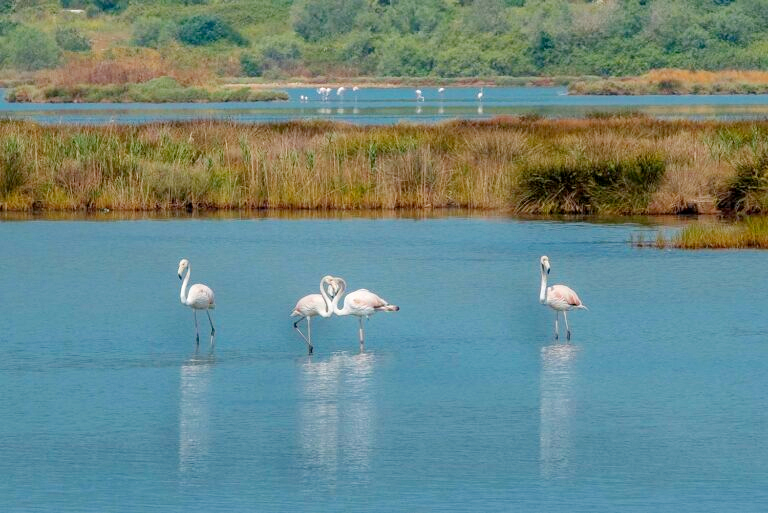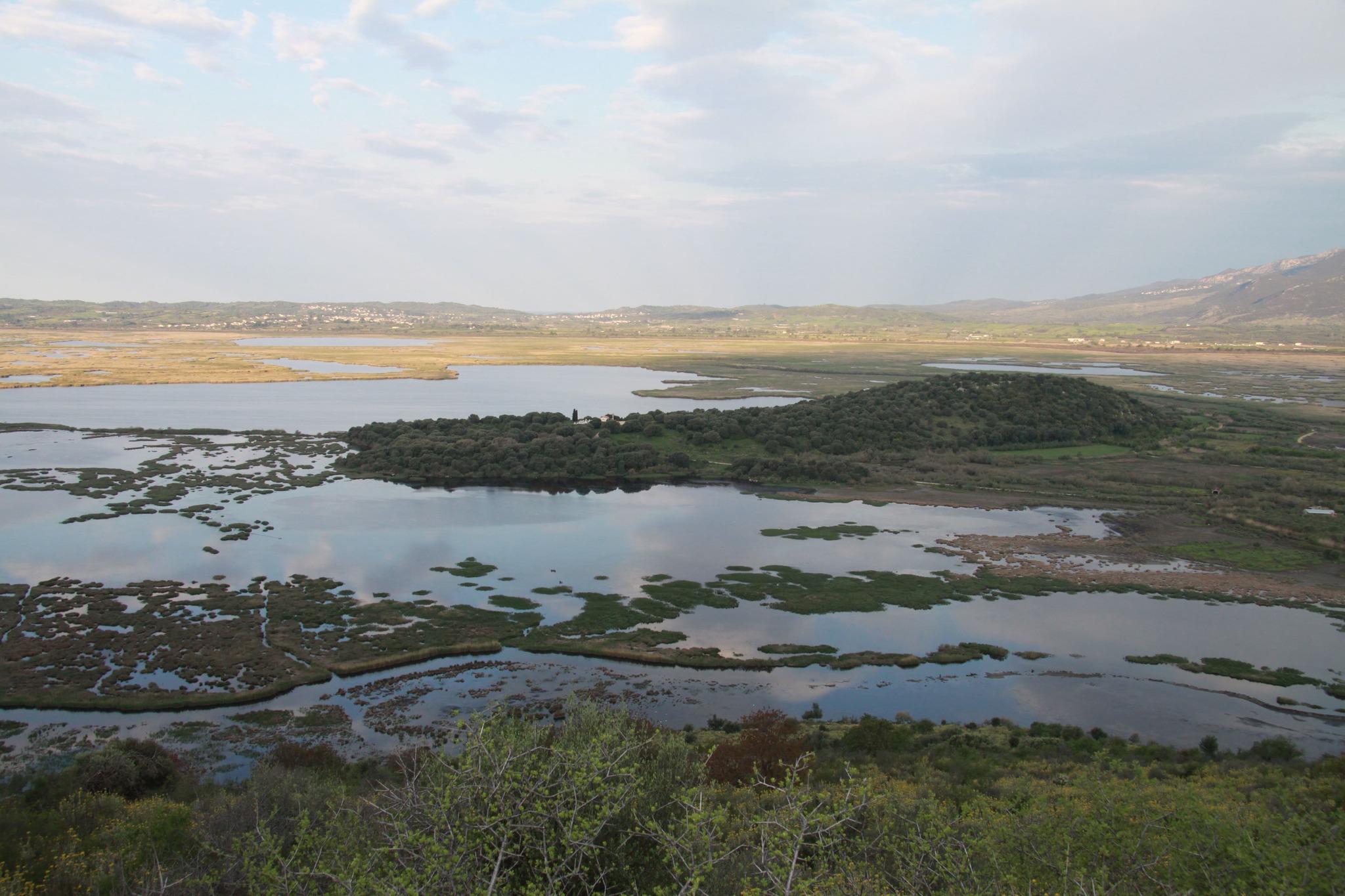Dawn breaks over the Ambracian Gulf, and a mist covers the still waters. A wooden fishing boat quietly slips out of the small harbor of Preveza, while a birdwatcher sets up his telescope next to the reeds.
The Ambracian Gulf is the largest wetland in Greece and one of the most important in Europe — an almost enclosed sea where nature and people have lived in harmony for centuries.
Its entrance, a narrow passage at Aktio, is so small that the waters resemble a lake, offering a tranquility rarely found in the Ionian Sea.

On one side, the wildlife: dolphins leap playfully through the water, loggerhead sea turtles surface for air, herons and flamingos add pink shades to the shallow lagoons, and majestic Dalmatian pelicans with wingspans of nearly three meters circle the sky.
In the Ambracian Gulf, around 300 bird species have been recorded, nearly 100 of which are rare or endangered — a rich birdlife that finds shelter in the vast reed beds and salt marshes.
At the same time, the people of the Ambracian Gulf — from fishermen working in the traditional fish traps (ntaliania) to the scientists and rangers of the National Park — live in harmony with nature.

The name of the gulf reflects the timeless bond between people and the environment. The Ambracian Gulf was named after ancient Ambracia, today’s city of Arta, showing that human presence here goes back thousands of years.
Its importance as a source of life is also evident in archaeological findings: in the ruins of Roman Nicopolis, mosaics depicting fishermen and fish have been discovered, showing that these waters have sustained people since ancient times.
Along the shores, history unfolds at every step — from the Byzantine churches of Arta to the small island of Koronisia with its chapel of Panagia in the Rodia lagoon, standing as witnesses of the continuous human presence beside the water.

The Ambracian is not just a place to see, but to experience. A boat trip from Preveza for dolphin and bird watching brings visitors close to the gulf’s nature — dolphins often playfully follow the boat, while flocks of birds fly over the wetlands.
In organized birdwatching observatories, nature lovers can admire flamingos and other rare birds up close, surrounded by the calm of the landscape. Around the gulf, scenic routes connect small towns: the amphitheatrical town of Amfilochia, at the innermost part of the gulf, offers wonderful views of the tranquil waters.
At sunset, the sun sinks behind the coast, painting the sky and sea in shades of purple and gold. An otherworldly silence spreads, broken only by the gentle lapping of the waves and the distant calls of the birds.
In such moments, visitors feel awe at the beauty and balance of this place. The Ambracian, with its poetic calm and priceless natural wealth, offers unique life experiences and stands as living proof that people and nature can coexist creatively.
It is a silent invitation to everyone to discover it and help protect this unique wetland of Greece.